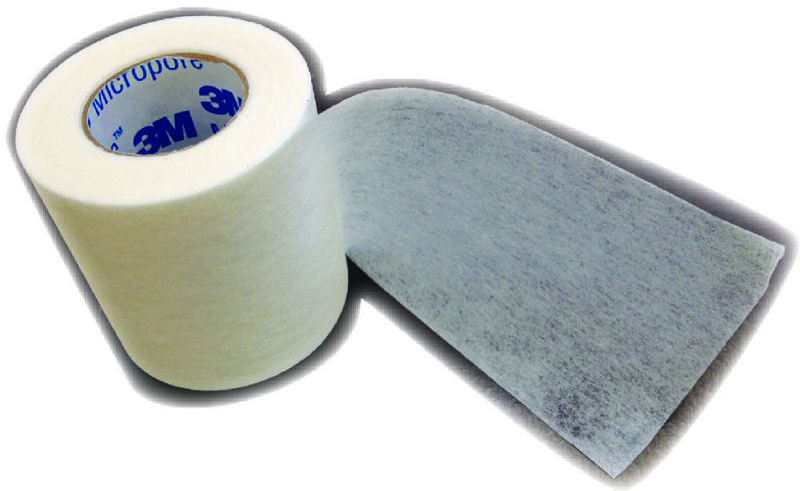Hobbling bravely onward after a foot develops a blister is one way to experience pain out of all proportion to the size of the injury.
"I did 107 miles of Race for the Ages back in September, and I had blisters starting about 25 miles," says Pete Ireland of Benton.
Race for the Ages is a timed event lasting several days in which racers lap a one-mile loop in Manchester, Tenn.; they are allowed to run the course for as many hours as they are years old. Ireland got 75 hours. His feet made him long to be younger.
"I just could not seem to do anything," he says. "I had treated my feet the way I usually did them during 100-mile races, and it just did not work."
Ireland is entitled to use the word "usually" in the same sentence with "100-mile footraces," having completed more than 70 ultra-distance events -- so many that he has lost count. He thought he'd figured out how to tape his feet using cotton-elastic tape. He no longer believes in that.
At the Western States Endurance Run he saw Kinesio Tex tape, or K-tape, fail, so he doesn't believe in that either.
HAVE THEORY, WILL TRAVEL
Blister-prone people have dozens of home remedies. In the fifth edition of Fixing Your Feet (Wilderness Press, 2011), author John Vonhof lists 175 options he describes as "worth trying." These range from wearing more than one sock to applying various name-brand tapes.
How about an unguent? People try antiperspirants; they try moisturizers. Would hiking barefoot prevent blisters? How about sandpapering every few days -- lightly?
But data collected by blister scientists (there are blister scientists) suggest that no method works for everybody.
Antiperspirants caused widespread skin distress in one study. Another found that applying lubricants such as petroleum jelly worked at first but eventually backfired by increasing the friction that causes blisters.
Research conducted at marathons suggests 39 percent of racers develop blisters. Research involving ultramarathoners suggests 6 percent to 16 percent of racers who drop out do so because of them. Other studies have estimated that 54 percent of backpackers get blisters, as do 64 percent of long-distance hikers. And the problem of friction blisters among training and active-duty military members goes way beyond discomfort -- it can sideline soldiers.
MEET OUR HERO
These stats are cited by the introduction to a new research report published April 11 in The Clinical Journal of Sport Medicine (bit.ly/23I8KOC). As the title -- "Paper Tape Prevents Foot Blisters" -- proclaims, this study found a "robust" result from applying inexpensive paper tape to blister-brone parts of ultramarathoners' feet.
Taping with strips of porous tape that is only marginally adhesive, common in first-aid kits and readily available at drugstores, resulted in a 40 percent reduction in the incidence of friction-caused foot blisters.
The research was conducted during Racing the Planet 2014, a seven-day, 155-mile ultramarathon across parts of Jordan, Madagascar and the Gobi and Atacama deserts.
Led by Dr. Grant S. Lipman, a clinical associate professor of medicine at Stanford University, the study tested a method advocated in his book The Wilderness First Aid Handbook (Skyhorse Publishing, 2013). Lipman has been medical director for ultras around the world and had noticed that racers who put their faith in inexpensive paper tape -- also called surgical tape -- appeared to have less trouble with blisters.
The study recruited 128 men and women participants in Racing the Planet who understood English (to avoid misunderstanding of instructions). They ranged in age from 22 to 63, and they weren't all stereotypical rail-thin racers; body mass indexes ranged from lighter (17.4) to heavier (35.1).
Before the race, researchers tossed a coin to decide which of each racer's feet would be studied. Trained assistants applied strips of tape to toes, heels and the bottom of the foot. They used 3M Micropore tape torn into half- or 1-inch strips. The bottom of the foot and the heel were taped with wider strips.
After the tape was smoothed on, runners wore their usual socks. They or medical staff in aid tents could reapply tape to the same areas at any time during the race.
The untaped part of the same foot served as a control.
By the end of the race, most of the runners had at least one blister, most on their toes. Although some blisters developed under the tape, 70 percent occurred on unprotected skin.
Twenty-one people dropped out of the study, for various reasons, the most common being that the paper tape wouldn't stay in place. Of the 109 "compliant" finishers, 47 had to reapply the tape during the event.
Still, the authors concluded, "We demonstrated [that] an inexpensive and easy-to-apply adhesive tape prevented foot blisters in runners."
WISE PRACTICES
Chrissy Ferguson of Maumelle directs the annual Arkansas Traveller 100 footrace in Perry County. "Oddly," she says, she hasn't had much trouble with blisters. But then, some people don't.
"Part of it may just be that I use the proper socks, which are the wicking socks. I stay away from the cottons," she says. "I think that having a shoe that's not too big or not too small is really important. And breaking them in so that you're not running with them right away. You're walking in them before you're actually running in them.
"Obviously, you never wear a new pair of shoes on a race."
She also thinks it's a good idea to remove calluses.
Ireland adds, "What works for one person doesn't necessarily work for the next person, and what worked last time may not work this time.
"My personal opinion is there is no silver bullet that works for everybody under every circumstance."
ActiveStyle on 05/02/2016

